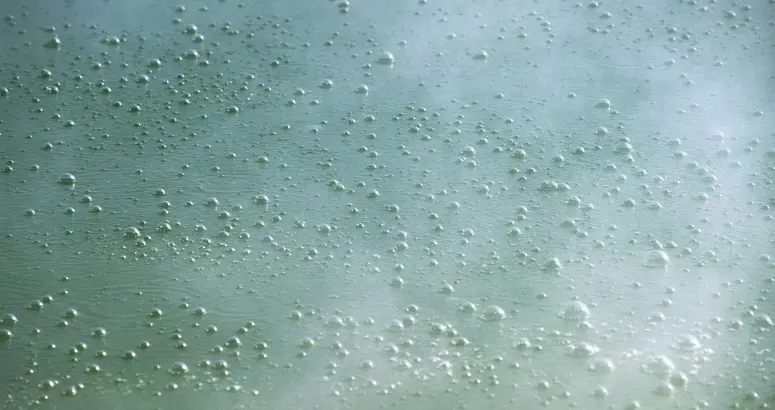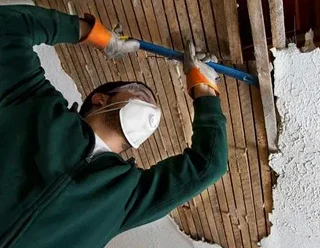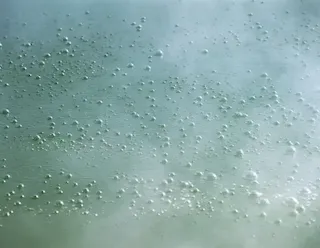Tired of having to deal with those unsightly and frustrating bubbles appearing all the time on your drywall mud? You’re not alone. Even skilled craftsmen encounter this issue once in a while, so it’s understandable that DIY repairs at home can’t also seem to keep this problem out of the way. Don’t fret just yet though. TexturesPro is here to explain why does drywall mud bubble and give you some pro-tips to prevent this from happening to your project.
First things first: What is drywall mud?
Why does drywall mud bubble and why can’t I seem to get rid of it?” Believe us, we understand how annoying those air bubbles are. But to answer your question, first we have to start small: what is drywall mud? Well, it’s a joint-compound made of gypsum, commonly used in the drywall-finishing process.
The two types, one in the form of a powder that you mix yourself and the other a premixed mud, offer a wide range of set times for it to dry. The one thing they both have in common is that, no matter the type, there’s always the risk it will bubble.
Why does my drywall mud bubble?
But then—why does drywall mud bubble?” Well, there are three main reasons: the first one, applying the joint-compound over a painted surface. The second, mixing the drywall mud incorrectly. And the third, not preparing the surface properly.
Now let’s dive into each one of them. Both drywall and the joint-compound are porous, meaning they have tiny spaces that allow them to absorb air and water. When applied to an unpainted surface, the air bubbles in drywall mud disappear through the paper and back into the rock. However, spreading joint-compounds over already painted drywall (which has lost permeability), leaves the bubbles to break free through the surface.
Overmixing drywall mud can also cause trouble, as it adds pockets of air into the substance. Moreover, not following the proper steps on how to mix the components of the mud is also a reason for disaster. Too much water added to the mix results in bubbles forming in the final product.
Finally, not preparing the surface thoroughly triggers more bubbling problems. As mentioned before, paint left prior application is a key factor. But dust, debris, or dirt interferes with adhesion and prompts bubbles to appear as a result.
Textures Pro tips on how to prevent bubbling problems on your drywall mud
Now that we’ve discussed why does drywall mud bubble, we can move on to how to prevent this problem from happening to your project. Here are our tips so you never have to deal with bubbles on drywall again:
Mix your joint-compound properly. Yes, most bubbling problems can be resolved from the very start. When mixed the right way, drywall mud should resemble a homogenous paste, almost like smooth cake icing.
Fold the drywall mud with the knife while on the tray. This will get rid of most air bubbles before application even starts.
Remove any layers of old paint from the surface. Also, clean the drywall thoroughly, to avoid any dust or dirt getting in the way of your perfect finish.
Final thoughts
Next time you have a renovation project, you won’t have to wonder why does drywall mud bubble and prevent it from happening to you. Or, you can ask TexturesPro professionals to handle it for you. Request your free quote now!
Give your home a fresh new look!
Tired of the popcorn ceiling in your home? Let our expert team remove it for you!






















